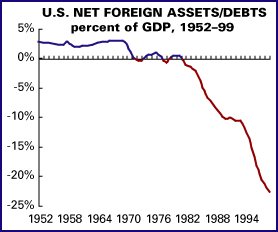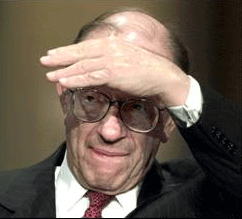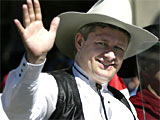
This month marked the 100th birthday day of Albert Hoffman the discoverer of LSD.
Father of LSD recalls his famous bicycle trip
LSD inventor keeps on truckin' at 100 The drug was popularized by Timothy Leary, the one-time Harvard lecturer known as the “high priest of LSD,” whose “turn on, tune in, drop out” advice to students in the 1960s glamorized the hallucinogen. The film star Cary Grant and numerous rock musicians extolled its virtues in achieving true self-discovery and enlightenment.
But away from the psychedelic trips and flower children, stories emerged of people going on murder sprees or jumping out of windows while hallucinating. Heavy users suffered permanent psychological damage.
The United States banned LSD in 1966 and other countries followed suit.
Mr. Hofmann maintains that was unfair, arguing the drug was not addictive. He has repeatedly said the ban should be lifted so LSD can be used in medical research, and he took the drug himself, purportedly on an occasional basis and out of scientific interest, for several decades.
And it has been 58 years since LSD was discovered and applied to scientific and psychiatric assessment. LSD - My Problem Child by Albert HofmannLSD was studied extensively by Dr. Oswald from Weyburn, Saskatchewan. Boing Boing: Midcentury LSD Experiments at Canadian mental hospital Yep little old Saskatchwan.
Dr. Oswald had done earlier experimentations with mescaline which he had administered to the author Aldous Huxely.
Mescaline, LSD, Psilocybin and Personality Change
Oswald was a pioneer in LSD investigations, he was the originator of the term 'psychedelic'. The experiments conducted in Saskatchewan were the more positive aspect of LSD experimentation during the late fifties and early sixties.
Flashback: Psychiatric Experimentation With LSD in Historical Perspective
In the popular mind, d-lysergic acid diethylamide (LSD) research in psychiatry has long been associated with the CIA-funded experiments conducted by Ewen Cameron at the Allen Memorial Institute in Montreal, Quebec. Despite this reputation, a host of medical researchers in the post–World War II era explored LSD for its potential therapeutic value. Some of the most widespread trials in the Western world occurred in Saskatchewan, under the direction of psychiatrists Humphry Osmond (in Weyburn) and Abram Hoffer (in Saskatoon). These medical researchers were first drawn to LSD because of its ability to produce a “model psychosis.” Their experiments with the drug that Osmond was to famously describe as a “psychedelic” led them to hypothesize and promote the biochemical nature of schizophrenia. This brief paper examines the early trials in Saskatchewan, drawing on hospital records, interviews with former research subjects, and the private papers of Hoffer and Osmond. It demonstrates that, far from being fringe medical research, these LSD trials represented a fruitful, and indeed encouraging, branch of psychiatric research occurring alongside more famous and successful trials of the first generation of psychopharmacological agents, such as chlropromazine and imipramine.During the 1950's and 1960's the Canadian Defense Department, and the American Defense department and the CIA funded LSD research on unsuspecting Canadian subjects. They also did joint secret studies of Biological Chemical warfare weapons on the citizens of Winnipeg, and as we are finding out now, Agent Orange tests on unsuspecting Canadian troops and citizens in Gagetown NB.
The most infamous of the CIA LSD mindcontrol experiments was the work of Dr. Ewan Cameron, but he was not alone. McGill university was also implicated in the illegal and unethical treatment of prisoners and unsuspecting patients by psychiatrists using LSD as well as other behavioral modification drugs and techniques.
Canadian experiments
The experiments were even exported to Canada when the CIA recruited Albany, New York doctor Ewan Cameron, author of the psychic driving concept which the CIA found particularly interesting. In it he described his theory on correcting madness, which consisted of erasing existing memories and rebuilding the psyche completely. He commuted to Montreal every week to work at the Allan Memorial Institute and was paid $69,000 from 1957 to 1964 to carry out MKULTRA experiments there. The CIA appears to have given him the potentially deadly experiments to carry out since they would be used on non-U.S. citizens.
In addition to LSD, Cameron also experimented with various paralytic drugs as well as electroshock "therapy" at 30 to 40 times the normal power. His "driving" experiments consisted of putting subjects into drug-induced coma for months on end (up to three in one case) while playing tape loops of noise or simple repetitive statements. His experiments were typically carried out on patients who had entered the institute for minor problems such as anxiety disorders and postpartum depression, many of whom suffered permanently from his actions.
It was during this era that Cameron became known worldwide as the first chairman of the World Psychiatric Association as well as president of the American and Canadian psychiatric associations. Cameron had also been a member of the Nuremberg medical tribunal only a decade earlier.
Resources on Drug Experiments Performed by the US Government
Letter re: LSD experiments at Prison for Women, Kingston
bioethics
LSD TESTS KINGSTON PRISON FOR WOMEN 1960'S
The Canadian military funded LSD experiments on students and musicians in Montreal
Canada was the one country that was extensively doing scientific and psychiatric studies on LSD, and would later influence the American studies such as those Ken Kesey went through and documented in his novel One Flew Over the Cuckoo's Nest.
THE USE OF LSD IN THE TREATMENT OF ALCOHOLISM
In fact it was the CIA which popularized LSD in the research community and can be thanked for its becoming the popular hippie drug it would become. The Original Captain Trips
The CIA aghast at the result of its 'experiment' getting out of control later would plant phony LSD fear stories in the press of the day, Time Magazine in partiuclar, about how LSD caused people to stare at the sun and go blind or leap off buildings because they thought they could fly. The incidents may have occured, not during hippie Timothy Leary style 'trips', but when unsuspecting CIA agents had been drugged without their knowing it.
The CIA dropped LSD but continued to practice narcopolitics with guns and weapons for heroin exchanges begining with the Vietnam war and it still continues today. As well as later connections between the CIA and the Cocaine cartels in Latin America. The War on Drugs was really about the war on drugs NOT supplied by the CIA. Always has been.
The CIA and The Politics of Heroin
CIA Hawking Heroin in Baghdad?
And while Dr. Hoffman blames LSD's wayward travels as the popular Tune In , Turn On, Drop Out drug of the Leary hippie era, its scientific banishment was orchestrated deliberately by the U.S. government after MKULTRA and other CIA experiments on mind control proved failures, and the popularity of the drug was getting out of their control.
Scientific research using LSD had to be restricted if not outright banned to cover up the covert studies done by CIA funded psychiatrists or else the scientific community would find out that results of so called benign studies were something more sinister.
The effect of lysergic acid diethylamide(LSD-25) on perception with stabilized images
The Guardian reports on one of the original British scientists who studied LSD prior to the famous Timothy Leary psychedlic revolution, who wants to return to studying its impact on mental illness.
Re-opening doors of perception
Sarah Boseley reports on the psychiatrist who wants to reverse the taboo against using LSD to help troubled patients
The revival of the idea of studying the impact of LSD is because the British Home Secretary has called for an extensive review of the drug legislation in Britain.
Will Clarke go soft on LSD and Ecstasy?
Charles Clarke has ordered a sweeping review of drug laws which could lead to the effective downgrading of Ecstasy and LSD.The Home Secretary, who caused fury by resisting demands to toughen the rules on cannabis, said the current system of classifying drugs could be torn up.
He is considering a new system which would take into account the 'social' consequences of each drug, including links to muggings and burglaries. Drugs are currently split into Class A, B and C.
In 1972 Canada like Britain plans to do today, did a comprehensive Royal Commission into the use of drugs. The Ledain commission is noted for its work around cannibis and the controversial reccomendation at the time, one that remains controversial, for the decriminalization of cannibis and recreational drugs. The study also included research on LSD.
Canada was the soul source of scientific experimentation on LSD and for access to LSD even after the U.S. banned it.
BC's Acid FlashbackCanada remained a source of LSD for drug studies conducted in the late 1970's all were done on animals none on humans after the US Administration banned the scientific use of LSD.
Long before Timothy Leary and the Summer of Love, patients at Hollywood Hospital in New Westminster were being treated with LSD.To Rick Doblin, New Westminster's Hollywood Hospital was a far-off place of myth and legend. It was 1972, and being a college student in Florida, he was keen to expand his mind. So he wrote to the hospital to see whether he could undergo its most famous treatment; a 12-hour trip into his consciousness, under the influence of pure Sandoz LSD.
"It was the only place left where you could have a guided LSD experience in a controlled setting," Doblin says. But the hospital told him it would cost $600, more than an 18-year-old could afford, and the trip never happened.
He never forgot about that hospital, though. After doing a PhD in public policy at Harvard, he became director of the Multidisciplinary Association for Psychedelic Studies, a Florida-based research group that designs experiments using mind-altering drugs in psychiatric therapy. Last month Doblin was in the news because the U.S. Food and Drug Administration had approved a MAPS-designed study using MDMA (better known as Ecstasy) for post-traumatic stress disorder. Now Doblin is helping create an experiment using LSD - which, like MDMA, was successfully used by therapists for years before it was outlawed. So he's set his sights once again on Hollywood Hospital - or at least the files for the thousands of patients who were treated there with LSD between 1957 and 1975
DISAGGREGATION OF BRAIN POLYSOMES AFTER LSD IN VIVO Involvement of LSD-Induced Hyperthermia
RNA Synthesis in Isolated Brain Nuclei after Administration of d-Lysergic Acid Diethylamide (LSD) In Vivo
Today a new age of mind explorers, working in the computer enhanced virtual reality of the wired culture have re-discovered the positive uses of LSD. LSD: The Geek's Wonder Drug?
The earlier researchers like Dr. Timothy Leary and Richard Albert (Baba Ram Dass) who used LSD to open the doors of perception ( as Aldous Huxely refered to his experiences on a similar hallucinogen; mescaline) this generation of mind explorers has their work to build on and Dr. Leary's later interest in computers. What goes around comes around and goes around and comes around.
Todd Brendan Fahey made the Digital Leap at the close of 1994.The synthesis of psychedelic drugs and the Internet has not been widely written of by the mainstream media, but Fahey and others believe the relationship to run deep.
John Perry Barlow remarked to Fahey, in an as-yet unpublished interview: "I'll go so far as to say, if the government succeeds in its War On (some) Drugs--if everyone who used marjiuana and LSD were to really be put in jails--America would not have an operational computer left."
This remark mirrors Timothy Leary's assertion, to Fahey in 1992, that "Steve Jobs and Steve Wozniak were barefoot, long-haired acid freaks" and that Bill Gates was known to use LSD while at Harvard.
Tags
Canada
Albert Hoffman
LSD
Sandos


 In 1982 - the year that Wall Street's great bull market began - the U.S. international debt account dipped solidly into the red, with net debts equivalent to 1.1% of GDP. (Debt doesn't figure in the calculation of GDP - it's just a way of making comparisons over time.) Since then, the U.S. debt position has gone deeper into the red every year except 1991 and 1993, reaching -22.6% in the second quarter of 1999, or just over $2 trillion. The slippage has continued even though what was once blamed as the culprit, the federal budget deficit, has turned into a supposedly virtuous surplus.
In 1982 - the year that Wall Street's great bull market began - the U.S. international debt account dipped solidly into the red, with net debts equivalent to 1.1% of GDP. (Debt doesn't figure in the calculation of GDP - it's just a way of making comparisons over time.) Since then, the U.S. debt position has gone deeper into the red every year except 1991 and 1993, reaching -22.6% in the second quarter of 1999, or just over $2 trillion. The slippage has continued even though what was once blamed as the culprit, the federal budget deficit, has turned into a supposedly virtuous surplus. It's gratifying to see Greenspan's stock sinking. Several analysts have written up his embarrassing
It's gratifying to see Greenspan's stock sinking. Several analysts have written up his embarrassing 







